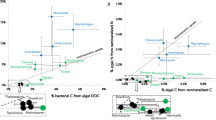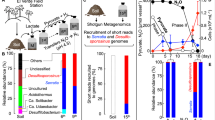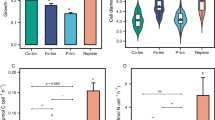Abstract
IN the course of an investigation in the Jute Agricultural Research Institute on nitrogen transformation in soils cropped with jute, a nitrogen-fixing bacterium has been isolated by the dilution-plate technique. It shows certain morphological and physiological differences from the known non-symbiotic nitrogen-fixing organisms like Pseudomonas azotocalligans and those belonging to the Azotobacteriaceae1. The cells at first have a coccus-like appearance and occur singly (measuring 0.75–1.0 × 1.5–2.5µ on an average) or as doublets or triplets, gradually changing to rod shape (Fig. 1). The cells are Gram-negative; they contain fat and are very difficult to suspend in water. The optimum temperature for growth was found to be about 28° C. The organism is aerobic, but can be grown under low oxygen tension in Winogradsky's nitrogen-free glucose–phosphate media. It can grow in acidic media also; even at pH 4.0 growth was obtained. Bromo-cresol purple milk (skimmed) is turned alkaline and a sediment is formed at the bottom with a clear liquid surface after ten days incubation at 30° C.
This is a preview of subscription content, access via your institution
Access options
Subscribe to this journal
Receive 51 print issues and online access
$199.00 per year
only $3.90 per issue
Buy this article
- Purchase on SpringerLink
- Instant access to full article PDF
Prices may be subject to local taxes which are calculated during checkout
Similar content being viewed by others
References
Anderson, G. R., J. Bact., 70, 129 (1955). Jenson, H. L., Bact. Rev., 18, 195 (1954). Bergy's “Manual of Determinative Bacteriology” (Baillière, Tindall and Cox, 1948).
Author information
Authors and Affiliations
Rights and permissions
About this article
Cite this article
ROY, A., MUKHERJEE, M. A New Type of Nitrogen-fixing Bacterium. Nature 180, 236 (1957). https://doi.org/10.1038/180236a0
Issue date:
DOI: https://doi.org/10.1038/180236a0
This article is cited by
-
Nitrogen contribution from the soil for herbage growth
Plant and Soil (1968)
-
A New Species of Derxia
Nature (1962)



